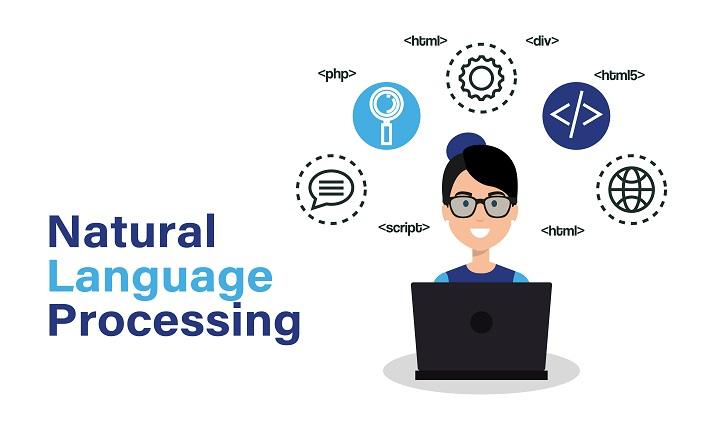Natural Language Processing (NLP) continues to be one of the most transformative technologies in the field of artificial intelligence (AI). With the advancements in machine learning, deep learning, and computational linguistics, NLP has experienced exponential growth. As we look ahead to 2025, it’s clear that NLP will continue to revolutionize how we interact with technology, offering businesses new opportunities for innovation, efficiency, and user experience improvement. In this blog post, we’ll explore the Best Natural Language Processing trends to watch in 2025 and how they are expected to shape the future.
1. Transformer Models and Large Language Models (LLMs)
In recent years, transformer-based models such as GPT-3 and BERT have significantly advanced the capabilities of NLP. These models have set a new standard for understanding and generating human language. By 2025, we can expect even more sophisticated transformer models that are fine-tuned to handle specialized tasks across various industries.
As the demand for highly accurate, context-aware models grows, these Best Natural Language Processing tools will continue to evolve. Whether it’s for customer service chatbots, content creation, or sentiment analysis, transformer models will play a pivotal role in providing businesses with cutting-edge NLP capabilities. Companies will invest in these technologies to improve user interaction and decision-making processes.
2. Multilingual NLP Capabilities
The world is becoming increasingly interconnected, and businesses are expanding their reach globally. As such, multilingual NLP is set to become an essential tool in 2025. The ability to analyze, generate, and understand text in multiple languages will enable organizations to communicate with a wider audience and expand their global presence.
By using multilingual models, companies can bridge language barriers and enhance customer experience across regions. This trend is particularly crucial for e-commerce platforms, international marketing strategies, and customer support systems, as they rely on precise language models to serve diverse markets. The Best Natural Language Processing techniques will offer seamless translations and improved communication between different linguistic groups.
3. Emotion and Sentiment Analysis
Emotion and sentiment analysis have been a key part of NLP for some time, but by 2025, advancements in this area will take a giant leap forward. Understanding the emotional tone behind a customer’s feedback or social media post can provide invaluable insights for businesses looking to enhance customer relationships.
Advanced emotion recognition models will go beyond detecting simple positive or negative sentiments. They will be able to identify nuanced emotional states such as sarcasm, frustration, and satisfaction. This evolution will empower companies to tailor their marketing efforts and customer support with greater precision. As a result, the Best Natural Language Processing tools will enable businesses to craft more personalized and empathetic responses.
4. Conversational AI and Chatbots
Conversational AI is another area where NLP is expected to make significant strides in 2025. As virtual assistants and chatbots become more intelligent, they will be able to carry on increasingly sophisticated conversations with humans. These systems will not only understand basic commands but will also interpret context, tone, and intent with high accuracy.
In 2025, businesses will rely heavily on NLP to power their conversational AI solutions, making customer support more efficient and cost-effective. Chatbots will handle a wide range of tasks from answering questions to resolving technical issues, all while providing a personalized user experience. As these Best Natural Language Processing technologies become more advanced, they will reshape the way organizations interact with their customers.
5. NLP for Healthcare
The healthcare industry is increasingly adopting NLP for various use cases, from improving patient care to automating administrative tasks. In 2025, NLP is expected to be integrated even more deeply into healthcare workflows. One of the key areas of growth will be in medical records management. NLP can help convert unstructured medical text into structured data, making it easier to analyze and retrieve vital information.
Moreover, NLP will play an important role in diagnostics by analyzing patient records, medical literature, and other textual data to assist in decision-making. The Best Natural Language Processing service will assist medical professionals in identifying patterns and trends in patient conditions, thereby improving treatment outcomes and operational efficiency.
6. Bias Detection and Ethical AI
As NLP models become more pervasive, addressing bias and ensuring ethical AI practices will be of utmost importance. In 2025, there will be a stronger emphasis on creating fair, unbiased NLP systems. Researchers and developers will continue to work on techniques to minimize the potential for bias in language models, ensuring that they do not perpetuate harmful stereotypes or misinformation.
The Best Natural Language Processing techniques will incorporate fairness mechanisms to detect and mitigate biased outcomes, fostering greater trust in AI systems. This trend is crucial for industries like law enforcement, recruitment, and healthcare, where biased models could have serious consequences.
7. Domain-Specific NLP Applications
Another exciting trend in 2025 is the rise of domain-specific NLP applications. While general-purpose NLP models have been impressive, there is growing demand for specialized models that can address unique needs in fields like finance, law, and engineering. These models will be trained on highly specialized datasets, enabling them to provide deep insights and solve complex industry-specific problems.
For example, financial institutions will benefit from NLP models that can analyze financial reports and market sentiment. In legal sectors, NLP will assist in reviewing contracts and legal documents more efficiently. By leveraging the Best Natural Language Processing service, businesses can gain a competitive edge by utilizing advanced technology tailored to their particular needs.
8. Automated Content Creation
In 2025, automated content creation powered by NLP will become a mainstream tool for marketers, writers, and content creators. AI-generated content will become more sophisticated and capable of producing articles, reports, and even creative works like poetry and fiction.
NLP’s ability to understand context and produce high-quality content will be a game-changer for content-heavy industries. With the Natural Language Processing tools, content creators can produce relevant, engaging, and personalized material at scale, improving efficiency and reducing costs.
Conclusion
As we approach 2025, it’s clear that NLP will continue to revolutionize how we process and understand language. The Best Natural Language Processing trends, including transformer models, multilingual capabilities, emotion analysis, and ethical AI, will shape industries and offer transformative benefits across various sectors. Whether you’re in healthcare, customer service, finance, or content creation, keeping an eye on these trends will be essential for staying competitive in an increasingly AI-driven world.
To explore more about how NLP can enhance your business, check out our Best Natural Language Processing service today!
Stay updated with our latest news and offerings! Follow us on Facebook, Instagram, and LinkedIn.


